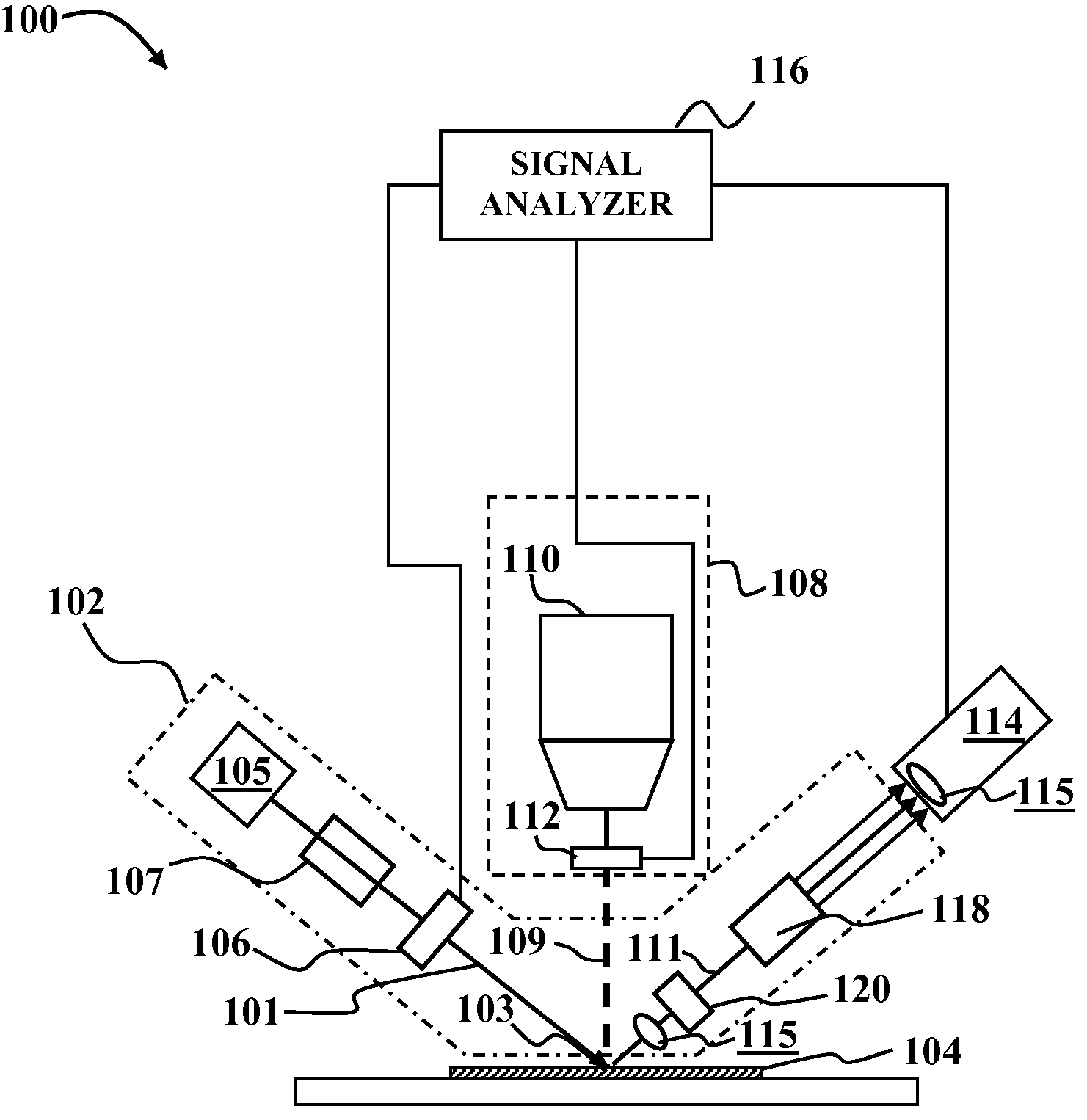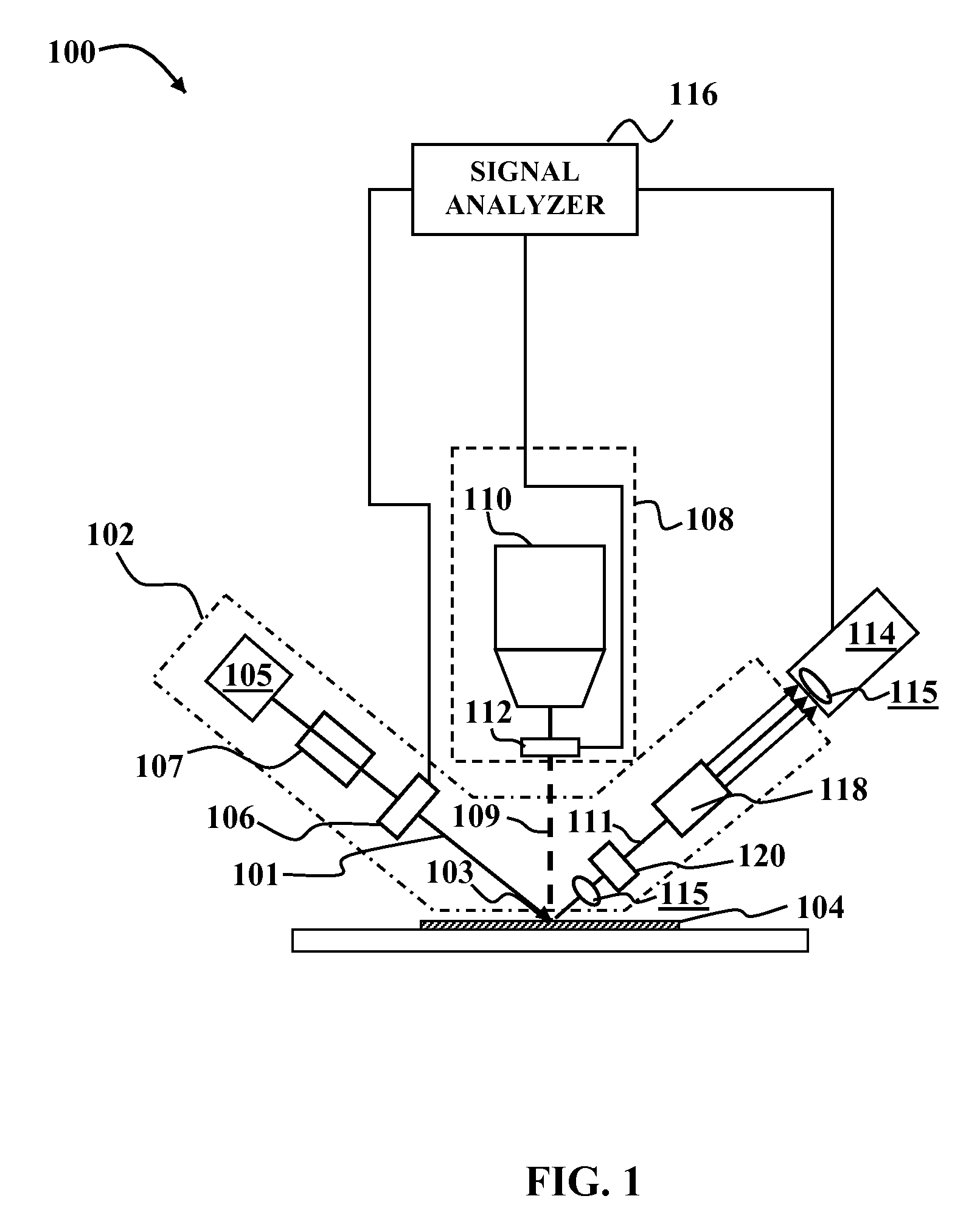Optical measurment systems and methods
a measurement system and optical technology, applied in the field of optical measurement systems and methods, can solve the problems of insufficient sensitiveness of ellipsometry to certain electrical conditions, and achieve the effects of reducing undesirable process variations, reducing sensitivity, and accuracy and decorrelation of parameters
- Summary
- Abstract
- Description
- Claims
- Application Information
AI Technical Summary
Benefits of technology
Problems solved by technology
Method used
Image
Examples
Embodiment Construction
[0010]Although the following detailed description contains many specific details for the purposes of illustration, anyone of ordinary skill in the art will appreciate that many variations and alterations to the following details are within the scope of the invention. Accordingly, the exemplary embodiments of the invention described below are set forth without any loss of generality to, and without imposing limitations upon, the claimed invention.
[0011]Because conventional spectrometer designs limit the sampling rate, previous attempts to use ellipsometry as a detection mechanism have been limited to single wavelength operation and polarization modulated ellipsometry makes more sense in that case. Certain embodiments of the present invention, by contrast, utilize a novel spectrometer, which enables rotating element spectroscopic detection in conjunction with extraction of a pump-modulation-synchronized signal on a per-pixel basis over a broad wavelength range.
[0012]FIG. 1 depicts an ...
PUM
 Login to View More
Login to View More Abstract
Description
Claims
Application Information
 Login to View More
Login to View More - R&D
- Intellectual Property
- Life Sciences
- Materials
- Tech Scout
- Unparalleled Data Quality
- Higher Quality Content
- 60% Fewer Hallucinations
Browse by: Latest US Patents, China's latest patents, Technical Efficacy Thesaurus, Application Domain, Technology Topic, Popular Technical Reports.
© 2025 PatSnap. All rights reserved.Legal|Privacy policy|Modern Slavery Act Transparency Statement|Sitemap|About US| Contact US: help@patsnap.com



